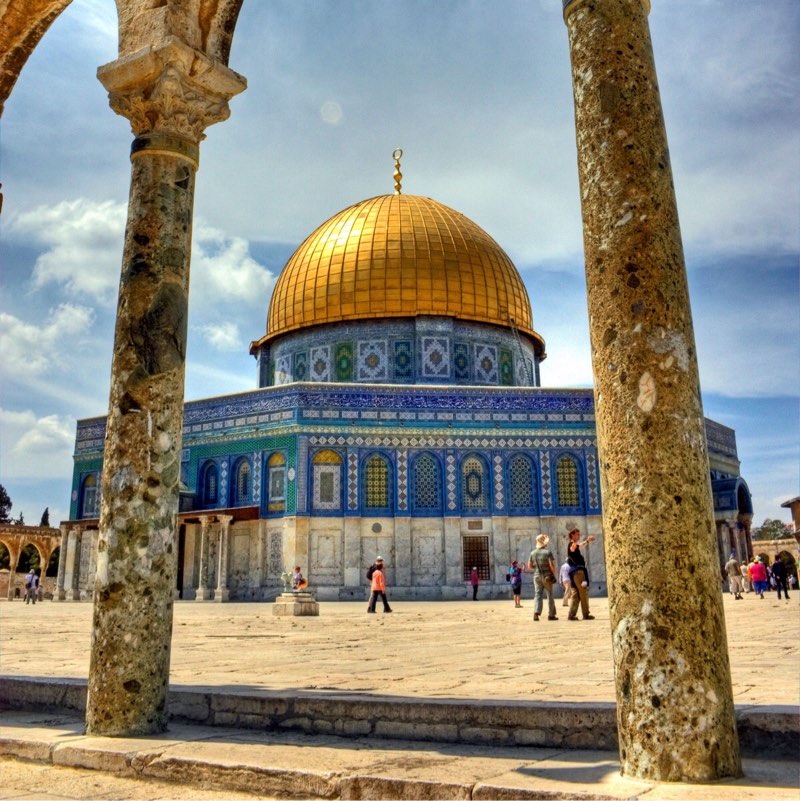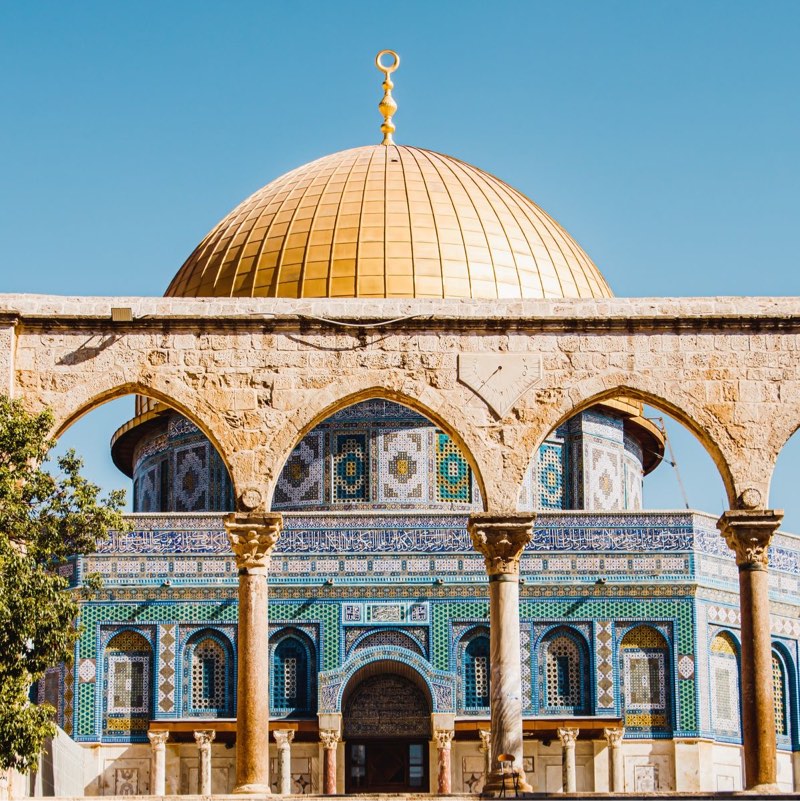The construction of the Dome of the Rock in Jerusalem is a significant event historically and religiously, representing Islamic power and presence in a city that holds immense importance for Judaism and Christianity as well.
Historical Context
1. Historical Background: The Dome of the Rock was completed in 691 CE under the patronage of Caliph Abd al-Malik during the Umayyad dynasty. Its construction occurred in the aftermath of the Muslim conquests across the Middle East and North Africa, as the new Islamic empire sought to establish its place within the broader religious landscape of Jerusalem, a city already revered by Jews and Christians.
2. Architectural Significance: The structure itself is an architectural marvel, featuring a large dome covered in gold, intricate mosaics, and a stunning octagonal base. It is one of the earliest examples of Islamic architecture and has influenced subsequent architectural developments in the Islamic world.
Symbolism of the Dome
1. Sign of Islamic Authority: The Dome of the Rock was constructed on the Temple Mount, a site sacred to both Jews (where the First and Second Temples stood) and Christians (associated with the life of Jesus). By building the Dome here, the Umayyads underscored their claim of authority and power in a city of profound religious significance. It signified the Islamic presence and dominance in a contested religious landscape.
2. Religious Significance: The Dome of the Rock is also important in Islamic tradition. It is believed to be the site from which the Prophet Muhammad ascended to heaven during the Night Journey (Isra and Mi'raj). This connection adds a layer of spiritual significance for Muslims and further solidifies the Dome's status as a central religious monument.
3. Cultural Representation: Beyond its political and religious implications, the Dome of the Rock serves as a cultural symbol and a point of identity for Muslims in Jerusalem and around the world. It has become synonymous with the city and Islamic heritage itself.
4. Interfaith Dynamics: The presence of the Dome also reflects the complex interfaith dynamics in Jerusalem. As a shared religious space, its existence signifies historical tensions but also the coexistence of different faiths in one city. The Dome's prominence amidst the backdrop of Judaism and Christianity emphasizes the diverse religious significance of Jerusalem.
Conclusion
In summary, the Dome of the Rock stands as a powerful symbol of Islamic authority, religious significance, and cultural identity in Jerusalem. Its construction was a strategic move to establish Islamic presence in a historically and religiously rich city, highlighting the complexities of interfaith relationships and the historical claims of different faiths to the land. Its ongoing significance is evident in contemporary discussions around religious identity, heritage, and political sovereignty in the region.


